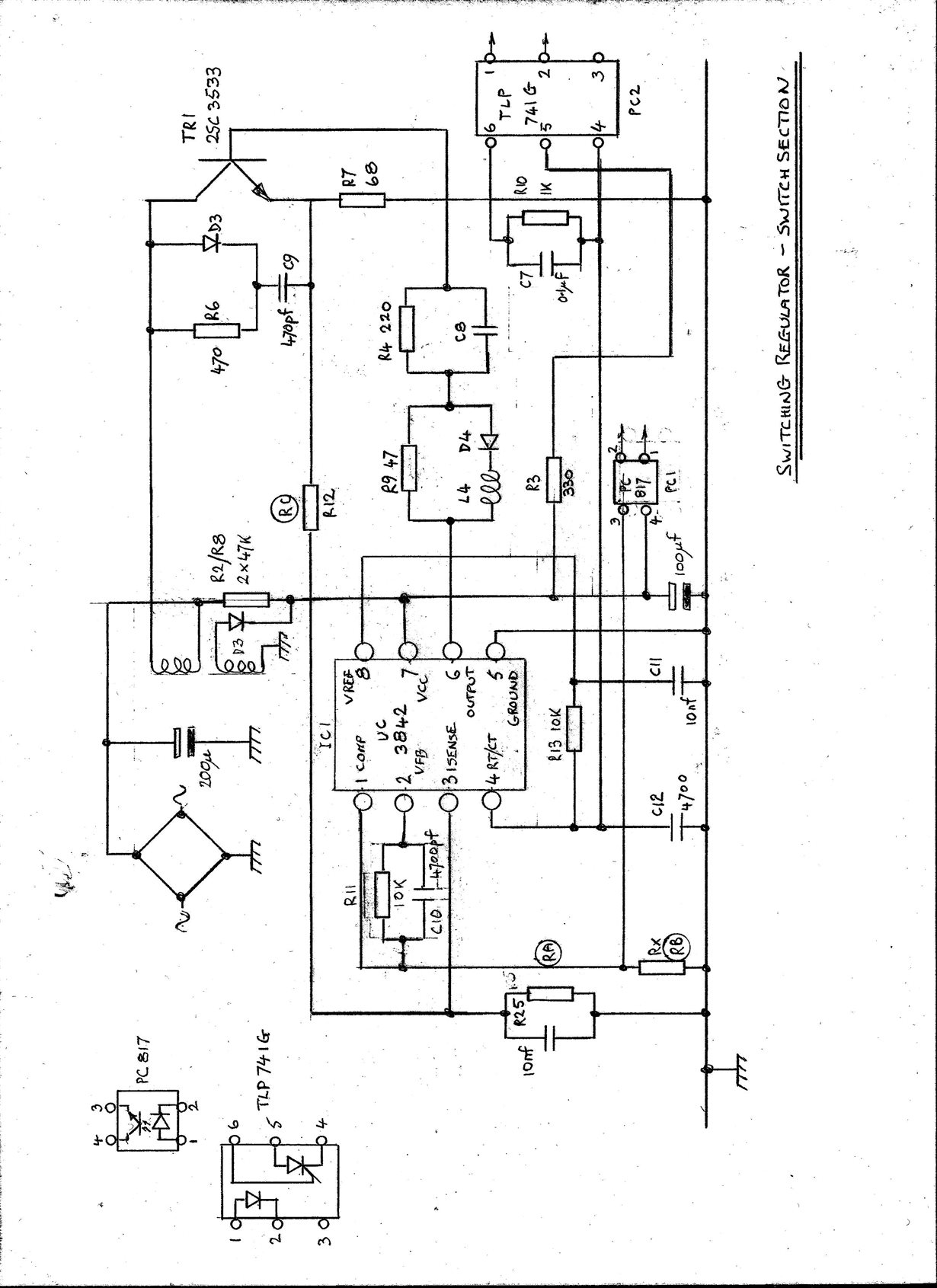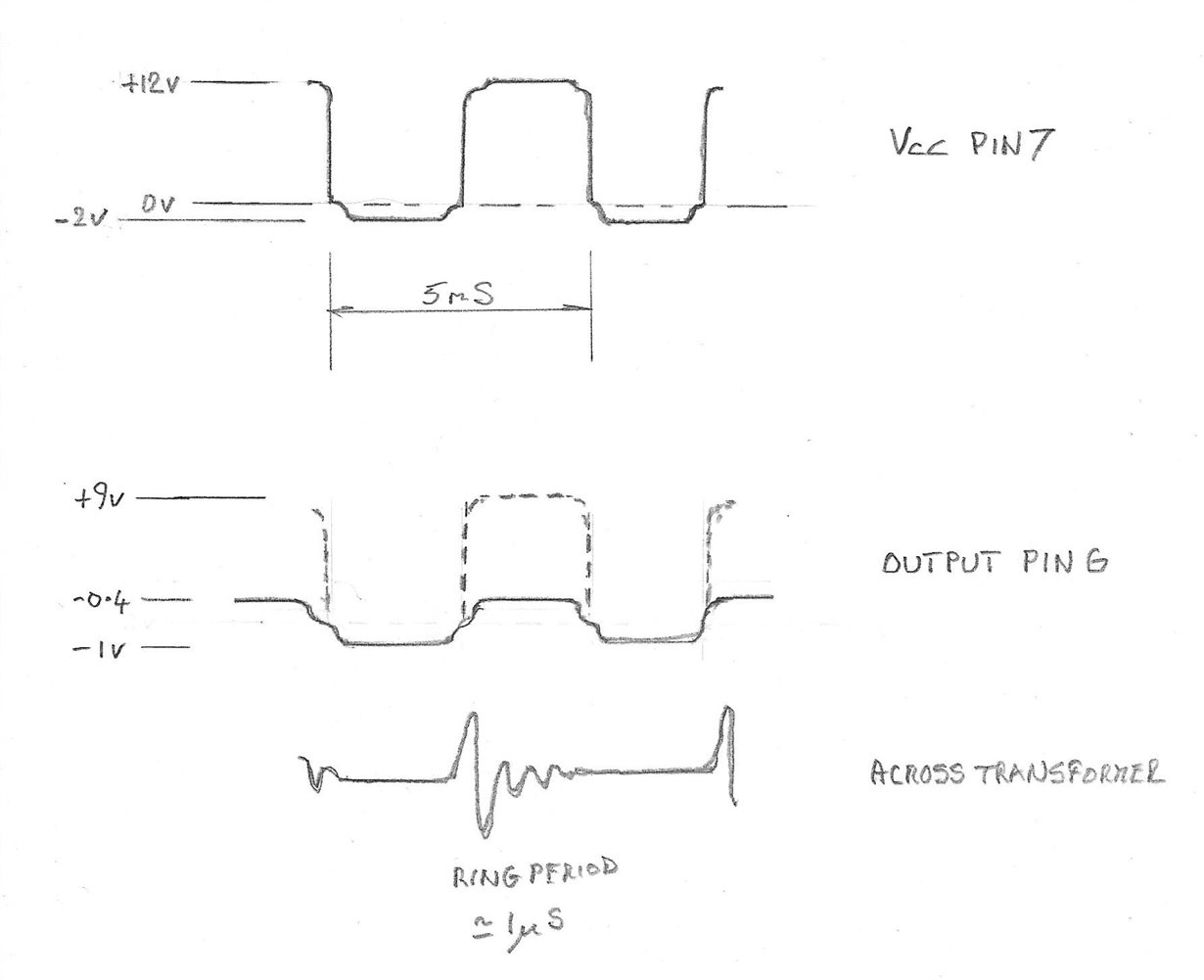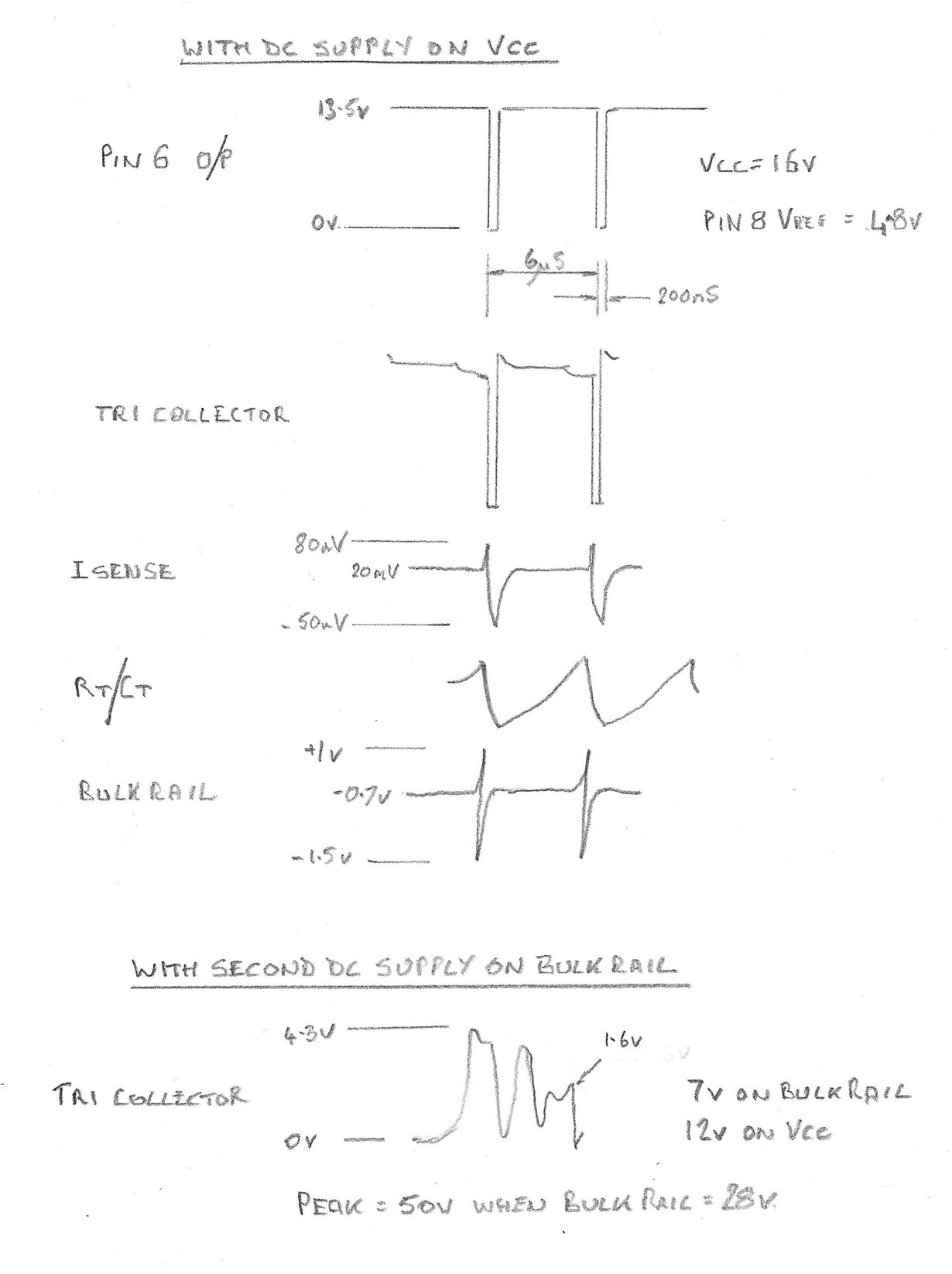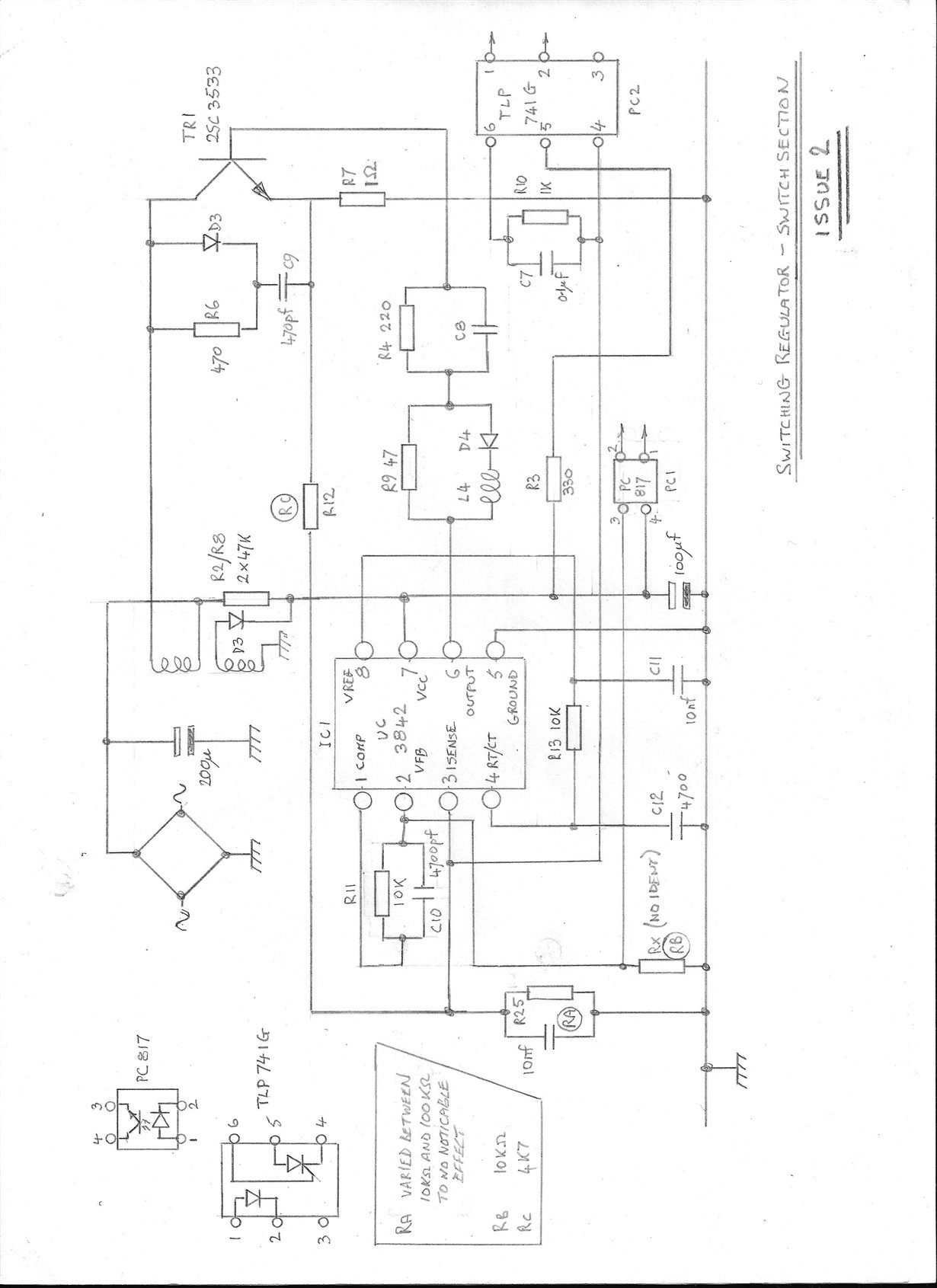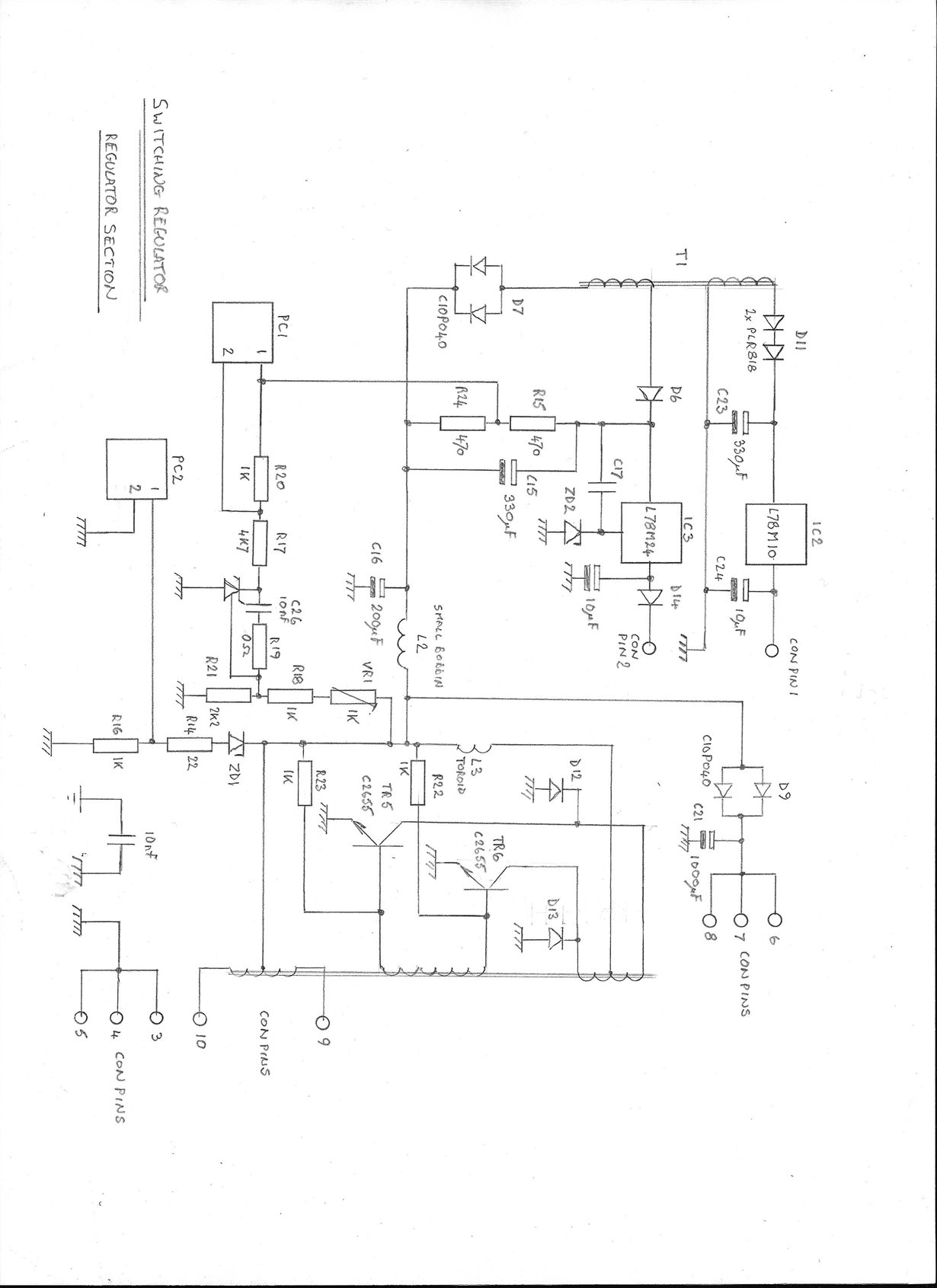Other Parts Discussed in Thread: TL431
I am trying to repair a fairly ancient (probably 1970s) power supply from a Japanese (Mitutoyo) Digital Readout unit on a vertical mill. The problem is restricted to the power supply. Unfortunately three of the resistors on the board have burnt out and so their values are unreadable. They were 1/8W - so not intended for high power - and I traced the cause to a mechanical problem causing a short. Based on the data sheet I have tried numerous values but, whilst it is trying to oscillate, it is only 'hunting' and pulsing. I have traced the circuit diagram for the switching section of the supply; the regulated outputs are derived from the secondary of the transformer (not shown in the diagram) and I do not think that part of the circuit is faulty. The diode side of the two photocouplers connect to the regulated supplies. The mystery resistors are labelled RA, RB, RC. Any ideas?
Many thanks in anticipation!


